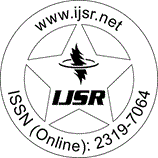Downloads: 135 | Views: 494
Research Paper | Engineering Science | Nigeria | Volume 2 Issue 9, September 2013 | Popularity: 6.7 / 10
Variation of Some Physical Properties of Rice Husk Ash Refractory with Temperature
Celestine, Mbakaan, Audu, Onojah, Msughter, Gbaakpen, Dooshima, Targema
Abstract: The influence of sintering temperature on the thermal conductivity of rice husk ash refractory is examined in this research. Cylindrical disk made from RHA whose chemical composition measured by XRF were sintered in the temperature range of 1000-1400. the crystalline phase transformation studied by XRD. The thermal conductivity of these Rice Husk Ash refractory was determined using the hot flux method and values calculated using Fouriers equation for steady state heat conduction. Porosity and density test were also carried out Result showed that there was an increase in apparent density and conductivity with increasing sintering temperature though the values are still low and satisfactory for most insulation applications. Porosity of rice husk ash refractory decreases with increasing sintering temperature therefore the gains of higher strength from higher sintering temperature are not negated.
Keywords: Rice Husk Ash, temperature, refractory
Edition: Volume 2 Issue 9, September 2013
Pages: 26 - 29
Please Disable the Pop-Up Blocker of Web Browser
Verification Code will appear in 2 Seconds ... Wait
